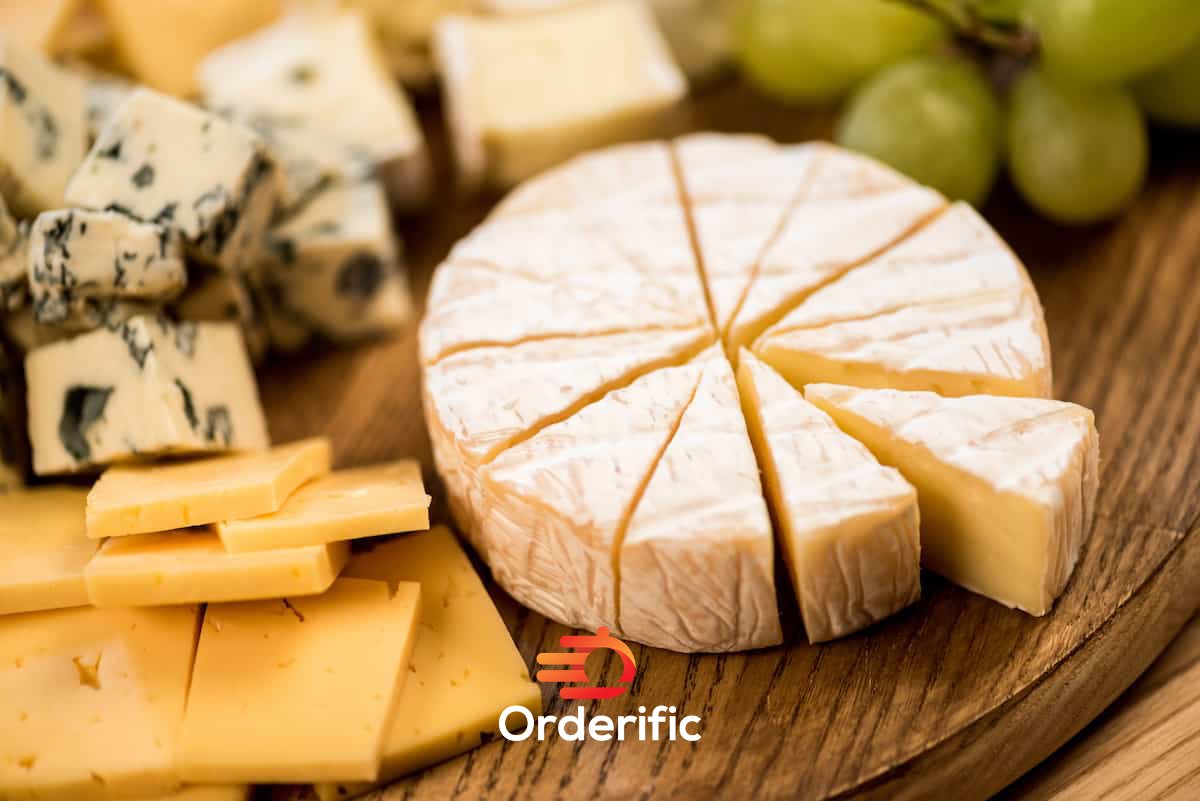Soft cheese, a versatile and delicious cheese category, continues to be a favorite among many cheese enthusiasts. They have high moisture content and are available in various flavors. These flavors range from mild and milky to stronger and more complex aged varieties. Soft cheeses are typically characterized as either unripened or ripened, with the latter undergoing a brief aging process that allows mold to grow and enhance the cheese’s overall flavor profile.
Some popular types of soft cheese include Brie, Mozzarella, and Camembert, originating from France and Italy. These cheeses have gained widespread recognition and appreciation for their unique tastes, textures, and suitability for a variety of culinary applications. Ricotta, goat cheese, and mascarpone are other well-known soft cheese varieties that enjoy global consumption. The distinct characteristics of each variety are largely determined by the specific processing techniques and ingredients used during cheese production.
As the appreciation for soft cheese grows, so does the interest in exploring new flavor profiles and combinations. Creative cheese enthusiasts have been experimenting with various aspects of soft cheese, such as incorporating herbs and spices or pairing them with different wines. This blend of tradition and innovation in the world of soft cheese ensures that these delectable dairy products remain an enduring source of pleasure for discerning palates worldwide.
First Some Questions
Aren’t All Soft Cheeses French?
While France is well known for its delicate cheeses, it’s wrong to accept that all soft cheeses come from France. These are made in different nations all over the planet, each with its novel flavor profiles and textures. For instance, Italy makes a few types of soft cheese, like mozzarella and ricotta. The US, especially Wisconsin, likewise has a long history of cheese production, with various assortments to offer.
Why Are Soft Cheeses Soft?
Soft cheeses have a little secret—they’re like the free-spirited rebels of the cheese world. Unlike hard cheese, they are young and vibrant, bursting with moisture and flavor. They achieve their softness through high moisture content and a shorter aging period.
It’s as if they refuse to conform to the norms of their cheese brethren, choosing instead to embrace their luscious, spreadable nature. So, get ready to dip your crackers into a world of creamy goodness!
Are All Soft Cheeses Stinky?
No, not all soft cheeses have a strong aroma. Although many have a distinctive smell, such as the famous French cheese Epoisses, with its orange, edible rind, there are also many mild-smelling varieties. Soft cheeses can range from mildly tangy to pungent, depending on factors like bacteria, enzymes, and aging time.
So, Here’s Your Sensational Soft Cheese Buyer’s Guide
For the ‘No Soft for Me’ers
For the people who are reluctant to attempt eating soft cheese, there are a few choices with milder flavors and creamy texture to help you. One famous option is mozzarella, a delicate Italian cheddar known for its smooth surface and gentle taste. It’s ideally suited for pizzas, blending in servings of mixed greens, or with new tomatoes and basil.
Another choice is new ricotta, which has a smooth yet not excessively strong flavor and is in many cases utilized in Italian cooking. Even cottage cheese is an option that gives a light and reviving taste, reasonable for those attempting to eat soft cheese.
For the ‘Not Too Strong for Me’ers
If you prefer a semi-bold taste and still want to enjoy the creaminess of soft cheese, consider trying brie or camembert. Both are French cheeses with creamy textures and slightly nutty flavors. Brie is generally milder in taste, while camembert can have a bit more of a pungent fragrance. You can enjoy these cheeses with crackers or toast and have them with a glass of wine.
For the ‘Bring on the FUNK’ers
Do you live life on the edge, seeking bold flavors and daring combinations? Well, my adventurous friend, the world of soft cheese has something extraordinary in store for you! Brace yourself for the boldness of washed-rind cheeses like Munster and Limburger. These cheeses have a distinct aroma that will excite your taste buds.
And if you’re feeling particularly daring, meet Époisses—a cheese so decadently rich and creamy that it could give your taste buds a run for their money. Pair these robust cheeses with crusty bread, charcuterie, and strong red wines, and prepare yourself for a flavor explosion like no other!
In conclusion, almost everyone can enjoy soft cheese – from reluctant tasters to daring funk-seekers. With a wide variety of textures, tastes, and origins, there’s one out there to suit every palate.
Share the Cheese Knowledge
Soft cheese is a delightful addition to any cheese board, offering a range of flavors and textures to suit various preferences. These cheeses are made without squeezing the curd to crush out the whey, bringing about a higher moisture content contrasted with harder cheese. Because of their milder surface, soft cheeses frequently have a more limited timeframe of usability, normally enduring half a month.
There are various kinds of soft cheeses, each with their special attributes. For example, brie is famous for its rich taste and smooth texture, while feta gives a brittle yet satisfyingly tangy experience. Some other well-known ones include Burrata and Camembert.
When serving soft cheese, consider a few key points to enhance enjoyment:
- Temperature: Allow the cheese to reach room temperature before serving to elevate flavors and enhance its smooth texture.
- Pairings: Soft cheeses can be paired with a multitude of fruits, nuts, and artisanal breads to bring out their distinct flavor profiles.
- Presentation: A well-designed cheese board is visually appealing and invites guests to dig in. Arrange the soft cheese next to complementing items and add visual flair with garnishes like fresh herbs or edible flowers.
In summary, soft cheeses offer a kaleidoscope of options to tantalize taste buds. Knowing the special traits and tips for presenting cheese helps you confidently share your cheese knowledge with loved ones at gatherings.
Conclusion
Get ready to embark on a creamy adventure like no other! Soft cheese is a tantalizing world filled with diverse flavors and textures, just waiting to be explored.
From the delicate buttery Brie, the tangy excitement of goat cheese, and the daring aromas of washed-rind varieties, there’s a soft cheese to suit every taste bud. So, let loose your cheese-loving spirit and savor the wonders of soft cheese. Your taste buds will thank you for the indulgence!
Check out blogs from Orderific for more food related information!













